Affiliate disclosure: This post may contain affiliate links. Please see our Privacy Policy.
Hardy Kiwi, also known as Arctic Kiwi, is a fruiting vine that produces kiwi-like fruits in cold climates. They can handle temperatures down to -40 degrees and the vigorous vines are almost impossible to kill.
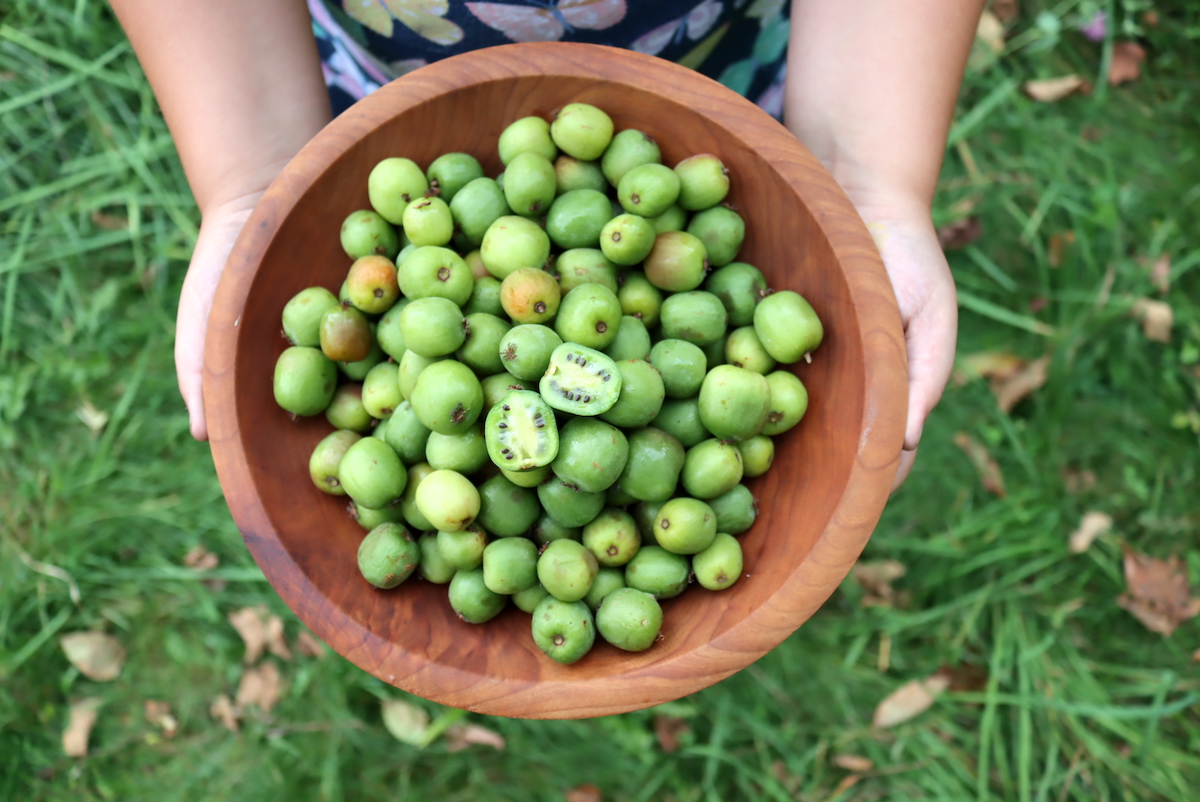
The first time I saw hardy kiwi was at my friend’s educational farmstead in New Hampshire, tucked amount their other unique cold-hardy fruits and perennial vegetables. They’d built a strong trellis, with 4”x4” posts in each corner and an arbor stretching over the top to make a 10×10 ft shaded patio.
When I looked at that structure from a distance, it seemed like overkill, but then when I got close, I understood. The hardy kiwi had completely eaten the structure, and thick vines snaked around the whole thing… you could hardly see the wood.
There was fruit everywhere, and I felt like I was in heaven.
Even in zone 3 or 4, these hardy kiwi vines are incredibly vigorous and productive. If you plan a good, solid space for them, you’ll have delicious kiwi fruits for a lifetime.
Later when we moved to our solar-powered homestead here in Vermont, we noticed hardy kiwi plants growing up a makeshift trellis woven out of 1” saplings from the woods. It was pretty, but my first thought was, that’s not going to hold!
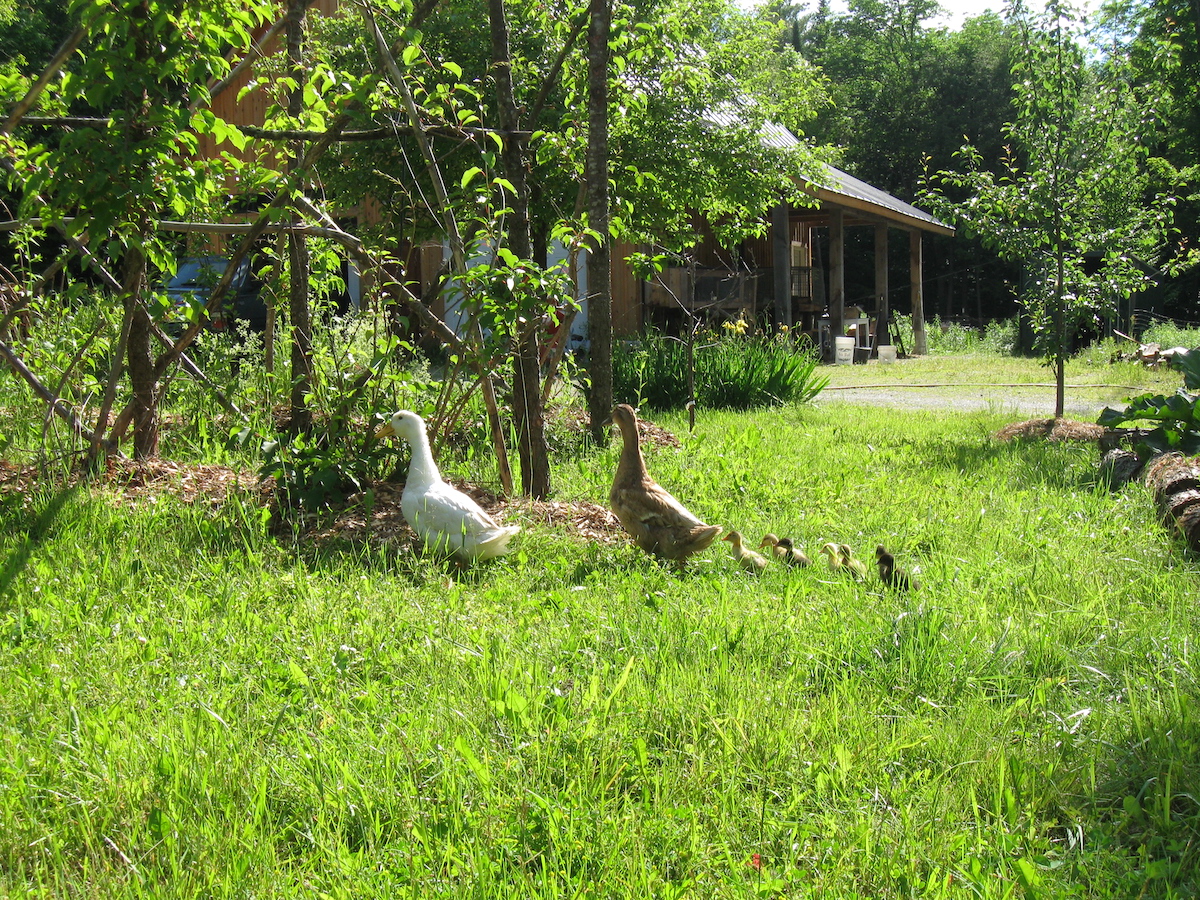
Hardy kiwi needs a strong trellis, but they are incredibly prolific and tasty.
It’s incredible that you can harvest kiwi fruits up here in the north country, where snows dominate the landscape for 6 months of the year.
These tropical treasures are well worth the effort of building a trellis!
What are Hardy Kiwi?
Hardy kiwi (Latin names Actinidia arguta and Actinidia kolomikta) is the miniature cousin of (Actinidia deliciosa), the fuzzy brown fruit found at grocery stores across the country.
Hardy kiwi has a long list of common names, you might know it as kiwi berry, grape kiwi, Arctic kiwi, dessert kiwi, northern kiwi, or Siberian kiwi or gooseberry. Here in Vermont, whenever I see it for sale in high-end grocery stores and co-ops it’s labeled “kiwi berry.”
Kiwi berries are sweeter than regular kiwi fruit and are high in B and C vitamins, dietary fiber, and antioxidants. One of my favorite things about enjoying hardy kiwi is the fact that there’s no peeling involved, you can just pop them in your mouth as-is — just like a grape!
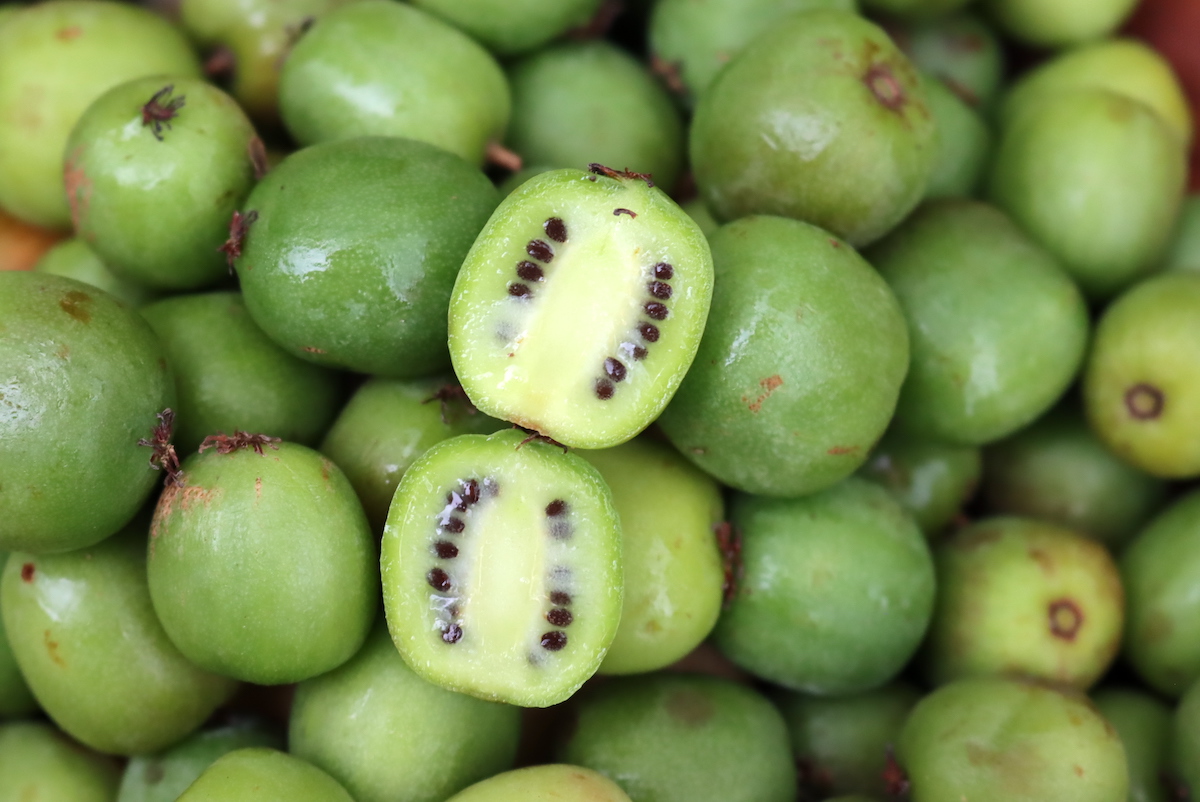
Hardiness of Arctic Kiwi
A deciduous climber, hardy kiwi tolerates the cold much better than its fuzzy relative, which thrives in USDA hardiness zones 8 to 9. Hardy kiwi, on the other hand, grows best in USDA hardiness zones 3 through 8.
Arctic kiwi is actually native to northern China, Siberia, and Korea, so it’s no stranger to cooler weather. On the contrary, hardy kiwi will thrive in temperatures as low as -40° F!
Unlike more aggressive climbers, hardy kiwi vines are less likely to pose a threat as an invasive species. Once established, these climbers will flourish if they have room to “twine” up and around trellises and fences.
Kiwi berries are often planted as a decorative vine, and are fairly quick to grow a multitude of beautiful heart-shaped leaves in the first year. The actual fruit, however, takes at least 3 years to blossom. A wait that is well worth it, in my opinion.
Another appealing characteristic of hardy kiwi, especially for those interested in permaculture? It doesn’t tend to attract pests or diseases, which eliminates the need for pesticides or herbicides.
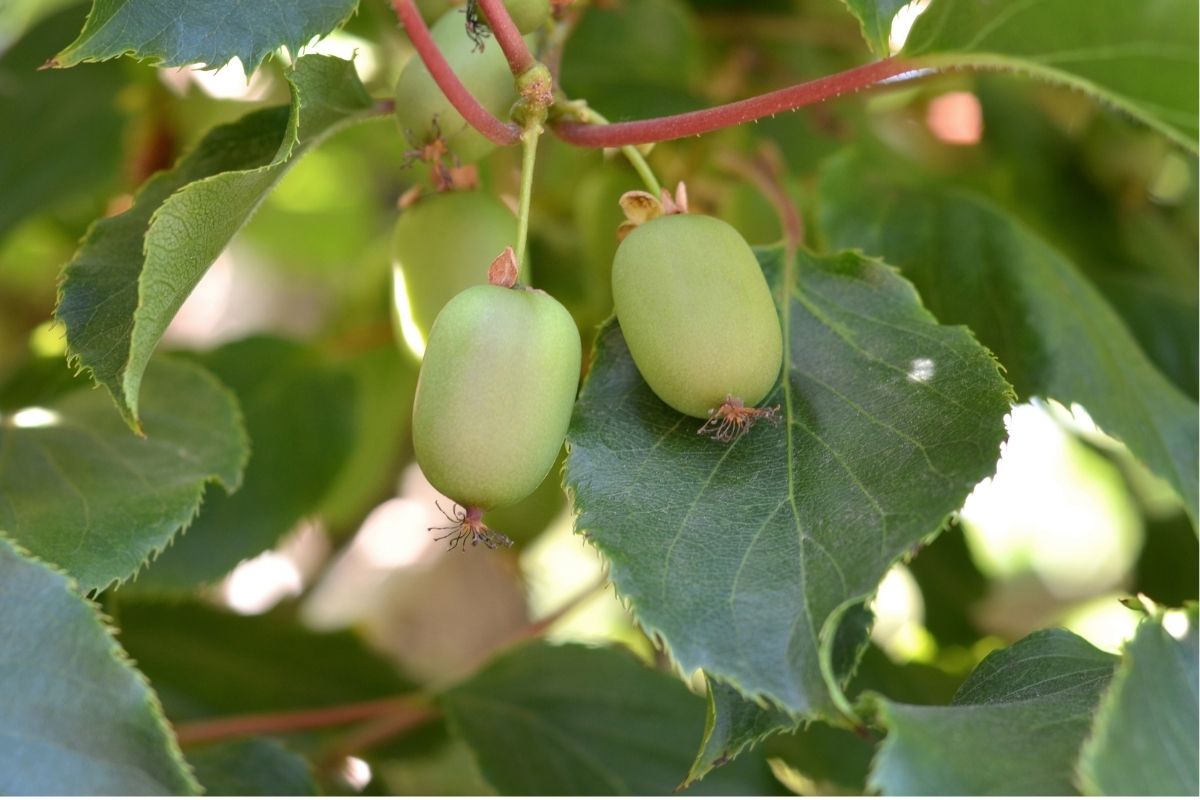
Hardy Kiwi Varieties
Hardy kiwi are dioecious, which means there are separate male and female plants. With the exception of one variety, female Arctic kiwi plants must be pollinated by a male plant in order to produce fruit.
The world of hardy kiwi cultivars is still relatively new, but if you’re able to find some of the following options I’d definitely suggest checking them out.
- Ananasnaya: often sold under the name Anna, this is a cultivar from Russia. The name means “pineapple-like” due to the fruits’ sweet scent and flavor. As the green fruit ripens, the skin turns a purple-red color.
- Geneva: known for its sweet, honey-like flavor and early ripening time.
- Issai: the exception to the rule, this cultivar has been bred to self-pollinate. While it isn’t as hardy as other varieties, the fruit is known for being particularly sweet and juicy.
- Ken’s Red: the fruit is reddish-purple, with dark green and red-streaked flesh.
- Red Beauty: known for its early ripening time and temperamental growing patterns. Unlike other varieties, the fruit is long and skinny and turns bright red when it ripens in the fall.
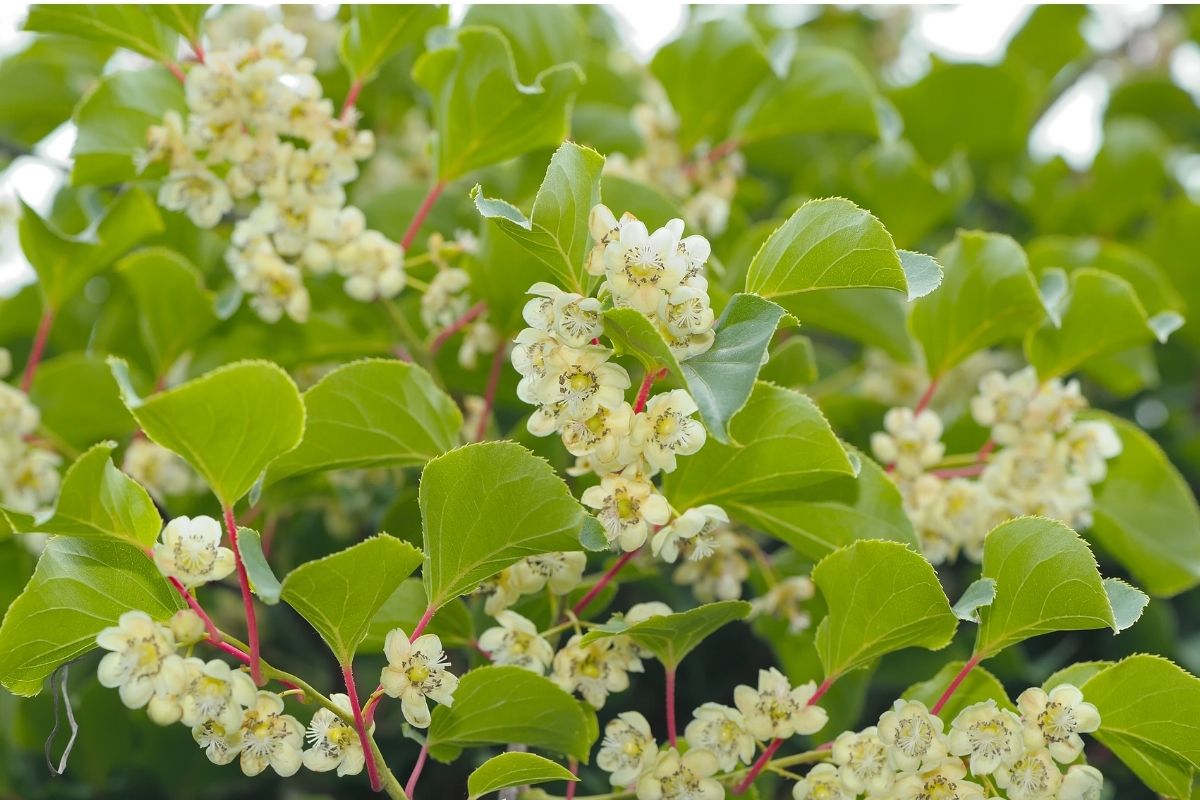
How to Grow Hardy Kiwi
If you plan on buying hardy kiwi from a nursery, it will most likely be sold to you as dormant rooted cuttings or potted plants. The planting method is similar for both, it mainly comes down to the time of year.
Plant dormant kiwi berry cuttings in early spring as soon as the soil can be worked, leaving a generous 10 to 15 feet between each plant.
Hardy kiwi vines need a supportive structure to grow around, like a trellis, fence, or pergola. Remember, the plants might be small now, but they can easily reach a width of 15 feet and a length of 20 feet — not to mention the weight of the fruit after a couple of years.
If you’re working with potted plants, wait until any danger of frost has passed before planting, leaving the same space between the plants.
Remember how I mentioned there’s a female plant and a male plant?
This means you’ll have to mix it up to ensure successful pollination. I’ve come across several different suggested ratios, but the overall consensus seems to be one male plant for every six female plants.
Hardy kiwi loves a sunny patch of soil to grow in, which in turn helps the vines produce all that delicious fruit. When selecting a spot, look for a space that’s protected from the wind.
During my research, I also discovered that it’s better to plant the vines on the north side of your garden space if you live somewhere that gets very cold — this will decrease the likelihood of freeze-thaw damage when spring rolls around.
While Arctic kiwi is less likely to fall victim to pests or disease, they are somewhat prone to root rot. For that reason, make sure the soil has good drainage.
Make sure the roots are completely covered before giving the planted cutting or plant a good watering. If the roots are particularly long, you can always give them a trim before planting.
Since these vines run the risk of root rot, only water them in the summer or during dry times (unless you’ve been hit with regular rain). For the first year, skip the fertilizer. After that, fertilize the vines every spring with a balanced fertilizer.
Hardy kiwi benefits from regular pruning. Prune female dormant plants in the winter and male plants in the early summer. If the vine is exposed to cold temperature regularly, it might die back in the winter — this is a sign the plant is healthy, simply remove the dead vines as they accumulate.
Propagating Hardy Kiwi Vines
Arctic kiwi can be propagated in two ways, via seed or greenwood cuttings. I’ve had varying degrees of success using either method, so I’ll walk you through both.
To propagate hardy kiwi from seed, start by removing the seeds from a mature hardy kiwi fruit and let them dry for a couple of days. Refrigerate the seeds for 2 months in a container of moist perlite.
Plant the seeds roughly 1/8-inch deep in potting soil and place in a warm spot with plenty of natural light. Keep the soil moist (but not overly so) and allow the seedlings to grow until they have four leaves, at which point they can be replanted into individual pots.
Plant outside once the vines are several inches tall.
To propagate kiwi berry from greenwood cuttings you’ll need to Remove a healthy vine from the plant, leaving one or two nodes intact by the base of the original plant. Cut off the growing tip and cut the vine into 6-inch segments.
Place the cuttings into a glass or container with 1 inch of water on the bottom. Give the cuttings roughly 3 weeks to grow, at which point small roots will have formed at the ends.
Replant the cuttings outdoors or in pots.
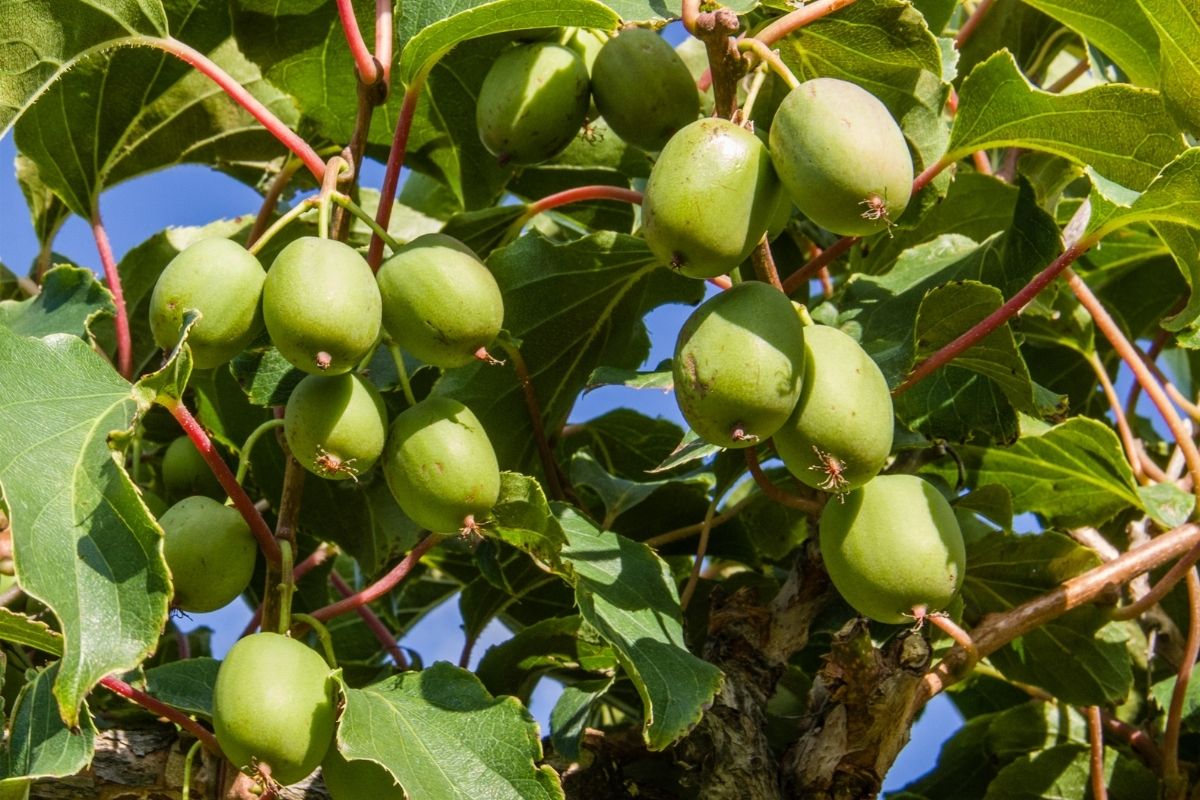
Where to Buy Hardy Kiwi Plants
Sometimes you can find hardy kiwi plants at well-stocked local plant nurseries, especially if they have a permaculture focus and sell other unique edible fruits. Here in Vermont, they’re actually quite popular since there aren’t all that many “tropical” flavored fruits that will survive our harsh winters.
If you can’t find them at a local nursery, they’re commonly available at mail order nurseries online. Nature Hills Nursery has a combo pack where you’ll get both a male and female plant together, so you’ll be good for both fruit and a pollinator.
Hardy Kiwi Recipes
Really they can be used in the same way as kiwis, and they’re mostly eaten fresh. The taste is a lot like kiwi, but more tropical, and sweeter/crisper in my opinion. The skins are also edible and have no fuzz, so you can just pop them in your mouth whole like a grape.
Since they’re smaller, they can be used in some places where kiwis just won’t work, like hardy kiwi pickles (a sweet/tart pickle that’s quite good).
My favorite way to eat them is fresh out of hand though, as there’s really nothing with such an intense tropical flavor that grows this far north. (Except maybe husk cherries, which taste like pineapple and strawberry…)
Nonetheless, I was able to find a few recipes using hardy kiwis specifically:
Even if you’re not growing hardy kiwi, you can sometimes find them at high-end markets sold as “kiwi berries” or at local farmers’ markets.
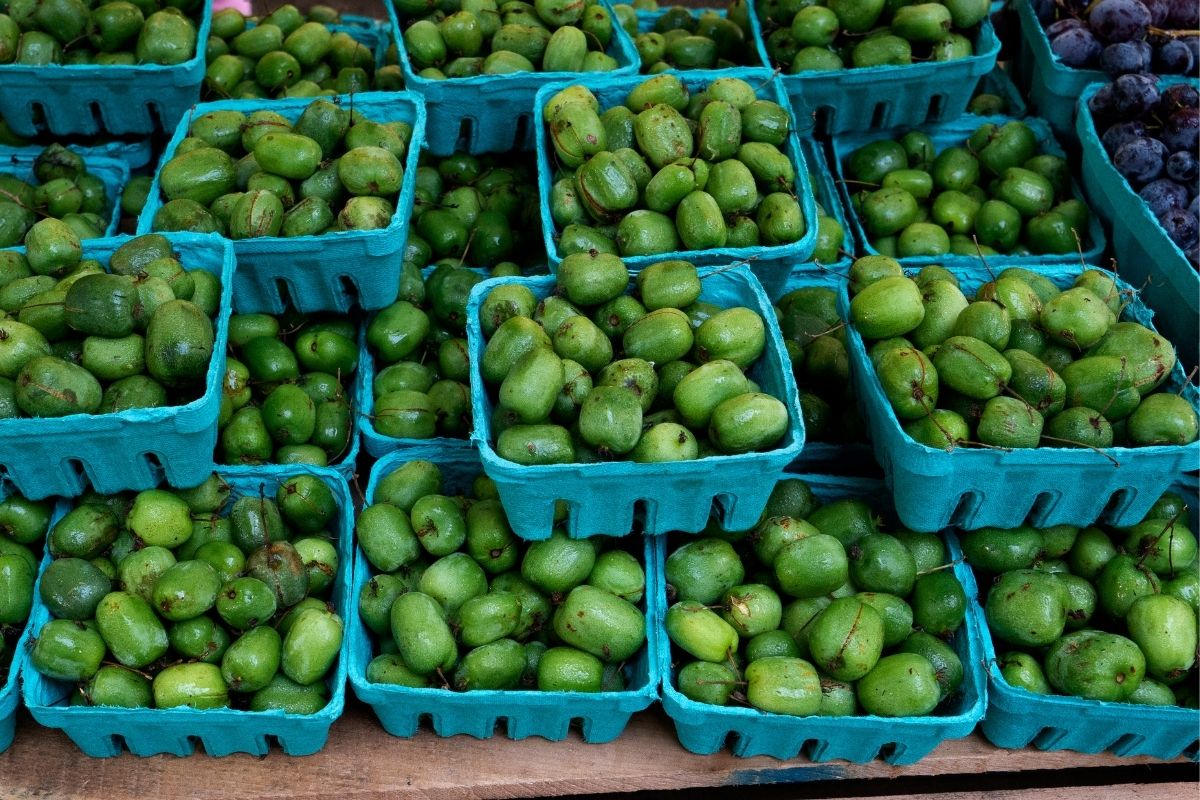
Other Uses for Hardy Kiwi
Besides being a source of food, the thick vines of hardy kiwi plants have other practical uses. The thick, flexible vines of hardy kiwi make them an excellent material for traditional basketry.
As with other climbers, Arctic kiwi vines are a natural way to make your space feel private, they’ll quickly cover open fences and backyard trellises.
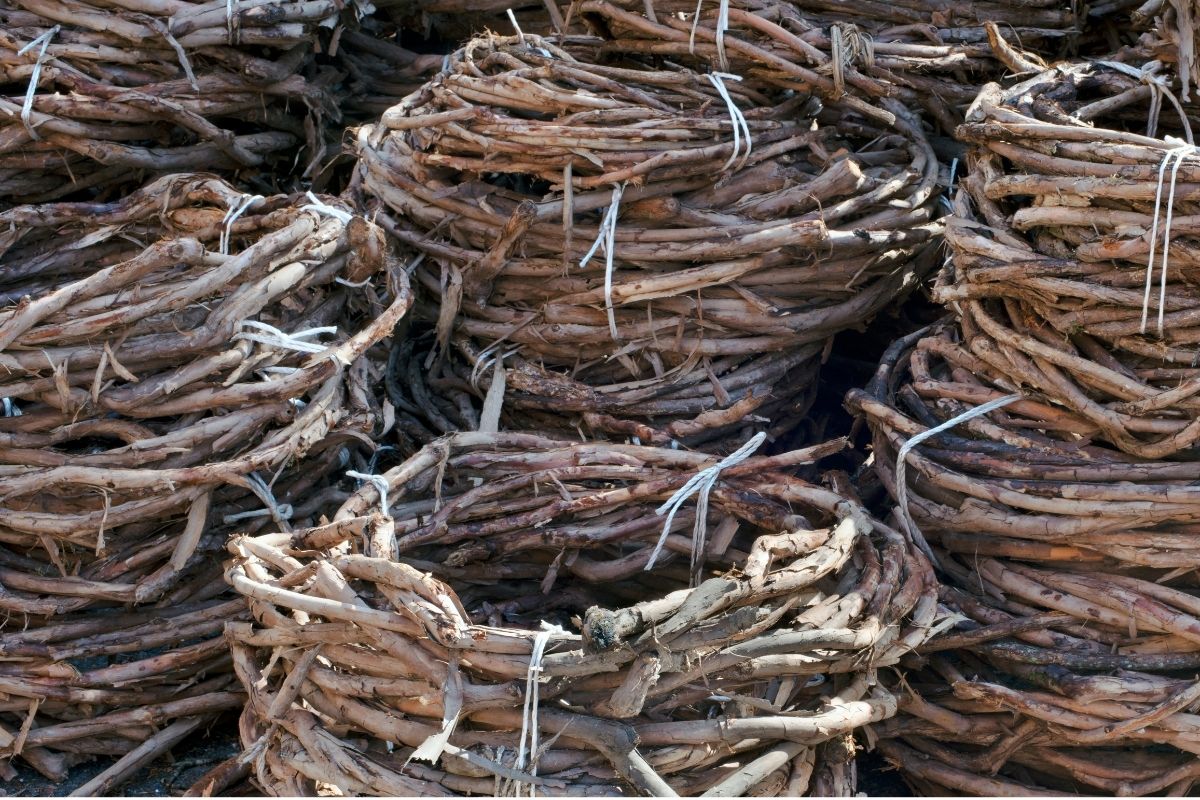
Unique Permaculture Fruits
Looking for more unique hardy permaculture fruits to grow in your backyard?
- How to Grow Salmonberry
- How to Grow Shipova
- How to Grow Honeyberries
- How to Grow Cornelian Cherries
- How to Grow Nanking Cherries
- How to Grow Lingonberries
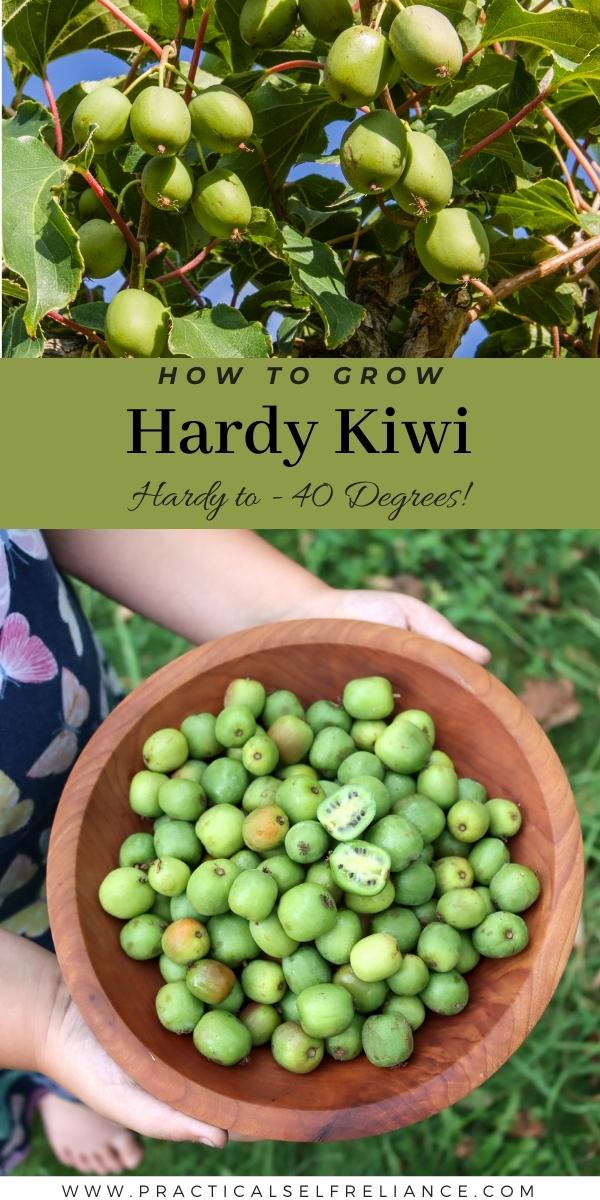
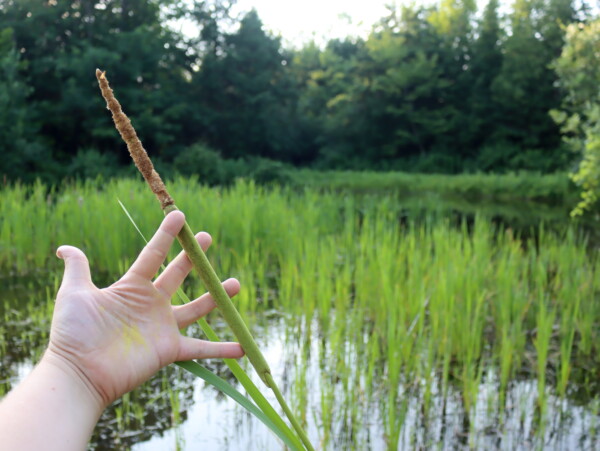
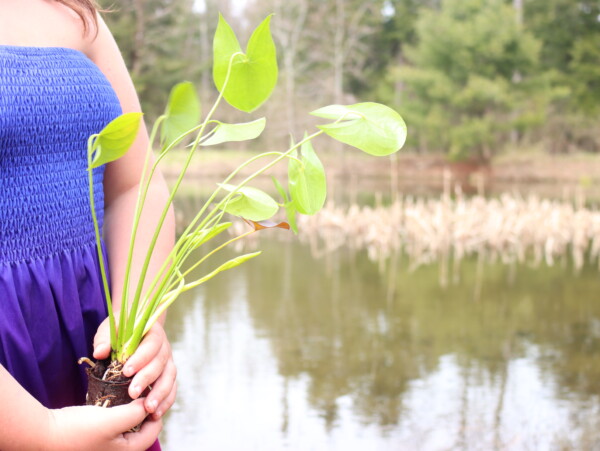
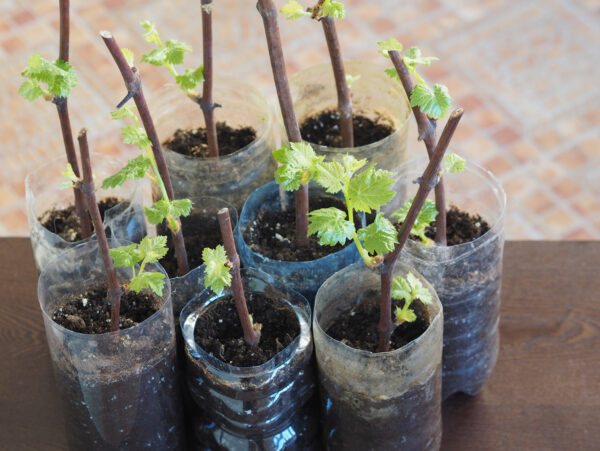
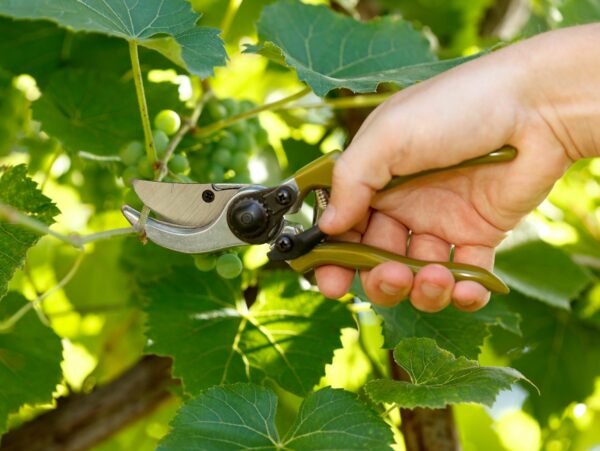










I’m looking for information on when to harvest. I keep finding articles that are missing this information. How do you know they’re ready, and what time of year? This is year 5 for me and the first one with fruit set. I’m in Zone 7b. Thanks!
From what I have read, it seems like the harvest window can be anywhere from July to November which is probably why it’s difficult to find this information. You will know they are ready when you cut them open and the seeds are black. You can also pick them and they will continue to ripen after they have been picked. When ripe they should also be firm to the touch with a little bit of give.
Hi there. I bought what I thought was 2 females and 1 male…and then one of them died! I had mixed up which was which by this point of course and although both the flowers look exactly the same, I am still not sure if they are both females. Is there a way to tell with Actinidia kolomikta which one is a female flower vs a male flower?
thank you very much,
Steve.
I found this article that should be helpful for you. https://laidbackgardener.blog/2017/06/17/is-my-kiwi-a-male-or-a-female/
Hi Ashley,
I live in a cold windy valley in Central Vermont. When considering a location to plant cold climate kiwi, would it be better to locate it in a shelter area which gets less sun, or a full sun location which will have to endure harsh winter winds? If there’s another option, please share.
Thanks
You really want a sunny spot that also has some wind protection. You don’t want anything over the top that will block the sun but instead plant it where there is a block on the side that will protect it from the wind such as buildings or trees.
Hey Ashley, I purchased a male and a female kiwi but have never had blossoms, let alone fruit! Obviously I didn’t get what I purchased and now I don’t know what to do. Is it safe to assume they are both male? Is there a way to tell male from female?
That’s not necessarily the case. There could be several reasons why they’re not blooming. Can you tell me how long you have had your plants?
I have self pollinating vines. Have had them for about 10 years. The pruning of the vine is very important. Each year there is more info about pruning, could you do an article about pruning as I don t think anybody should go thru the lack of info that I did.
Thanks
Are you wanting information on pruning this particular plant or just pruning in general?
Hi there! Thank you for the informative article. I’m considering planting a male and female Arctic beauty kiwi but I’m trying to get opinions on whether my existing trellis is enough space or not. The trellis has VERY strong lattice-supported two sides and a top, the two sides are 5’wide x8′ tall, top is 5’x5′. I successfully grew two varieties of grape vines on it, but they need to be moved to a different part of the yard thus freeing up the trellis for something new. I’m zone 4, and the grapes were really successful so long as I aggressively pruned them. Would I be able to swing two kiwis on this trellis, do you think? Thank You!
They can reach up to 15 feet in width and 20 feet in length but if the trellis is strong enough to hold them then it might work, especially with some pruning.
Ashley, do you have any idea if these are in the nightshade family? Real gooseberries are, goji berries are, I just discovered blueberries and haskap are also. I’m having trouble finding a straight answer, also having trouble finding a fruit I can grow to can for winter – not fruit trees – they will take too many years. I was planning on aronia and elderberry, Now it looks like both of those are out for me. Zone 5 but I like to plant for zone 4 to be safe. Just currants maybe? Thank you!
From what I have read, I don’t believe that the hardy kiwi are in the nightshade family. You can do strawberries.
Great article as always . I grew Issai and Ken’s Red in zone 5. Where I ordered, suggested Issai could pollinate Kens. It even gave me a few green fruits first year. Then one died. I wrongly assumed it was the Ken’s. Kept waiting for more green fruit on the very vigorous vine remaining. Should have bought a different male would have had years of fruit instead of constant pruning. Have heard from others Issai not as hardy as promised. Moved to zone 3. Reading kolomikta are hardier than arguta, less aggressive, and like a little shade. Also read the branches make good rabbit fodder. So am hoping to take advantage of a plant that needs multiple prunings a year. Going to try Artic beauty, September sun(female) and pasha (male) from Jung’s on the rabbit run. Happy growing. And thanks again for your always informative newsletters
You’re welcome. We’re so glad you enjoyed the post. Please keep us updated on your new varieties.
We live in Colorado at 6,500′. Do you think these will grow at altitude? What about heat? We have our notorious winter’s but also summer heat. I’m considering planting on a pergola that faces SE but is protected from intense sun and wind as the house is to the west of the pergola.
I don’t know specifically about altitude, but they’re known for growing in some pretty harsh places. Sounds like you have a good plan, with good sun protection in the summer. Good luck!
My biggest concern in the high elevations of Colorado would be that it breaks dormancy too early (April/early May) only to get hit by a late frost in late May or even June. I would try to delay the emergence from dormancy as much as possible to avoid that problem, maybe shade the plants until June?
In the Southern US, the problem is they can get warm days and warm nights for a week or longer in February or March heat waves, causing hardy kiwi to break dormancy, only to get hit by a late frost in April.
It seems like Colorado gets warm days and cool nights. Maybe the fact that you get nights in the 25-35F range in April and May on a regular basis will delay emergence from dormancy, even though the days are often warm by then (65-80F).
The ideal climate would probably be the northern US/southern Canada where you don’t get that much heat early in the spring, but then once it’s warm, it stays warm and you don’t have to worry about frosts until late September/October.
You mention hardy kiwi pickles: but no recipe?
Very interesting. I think I’ll try to get some plants and begin growing these this year.
Thank you
Try using them in this pickled grape recipe: https://www.seriouseats.com/pickled-red-grapes